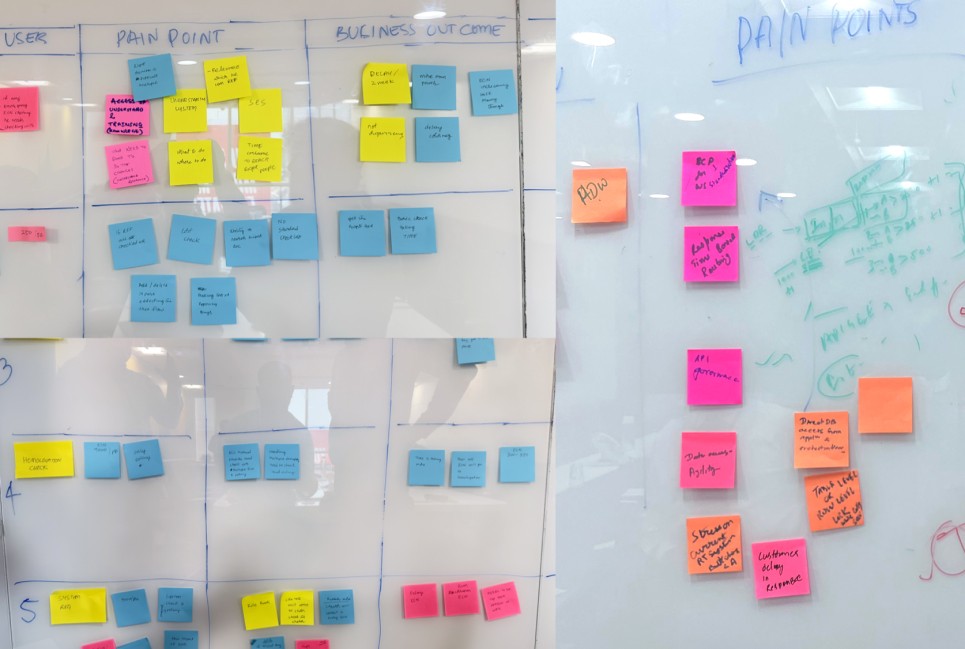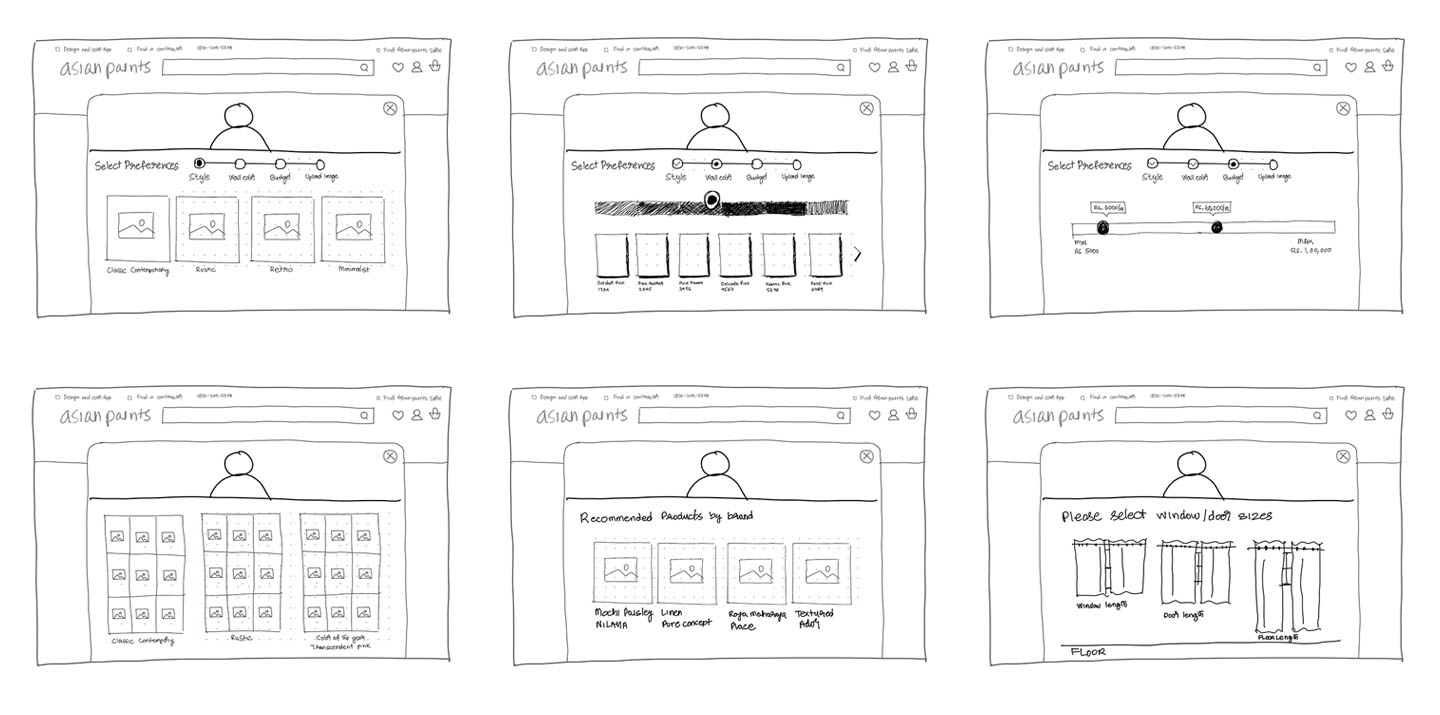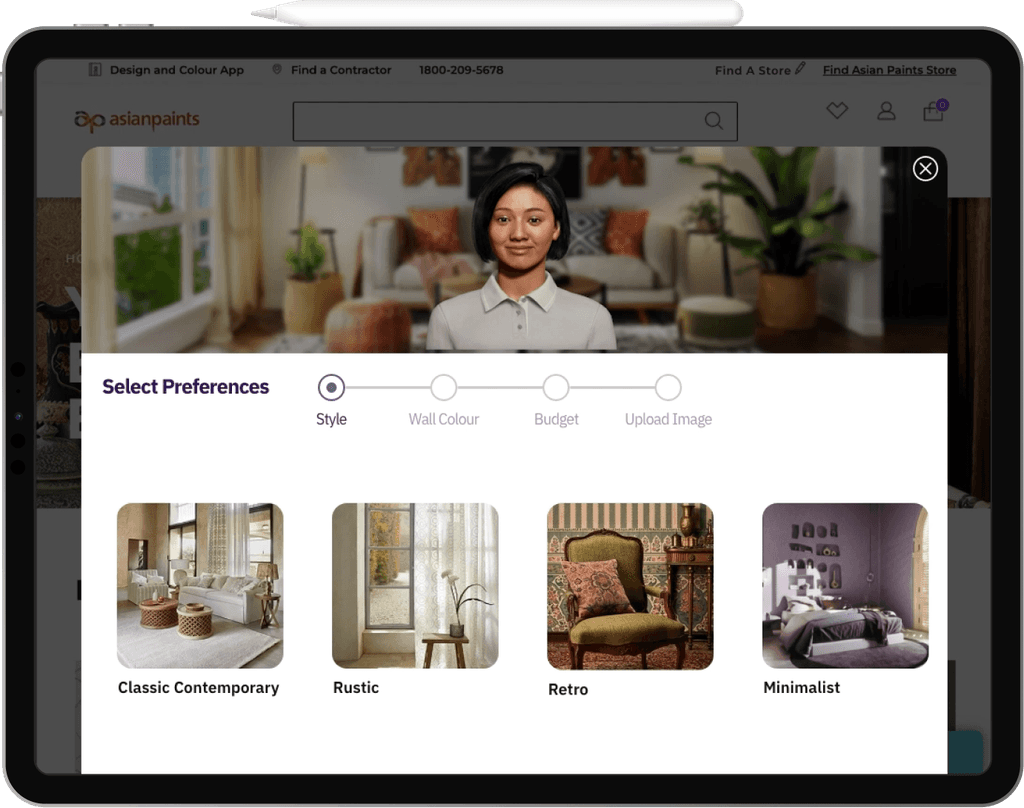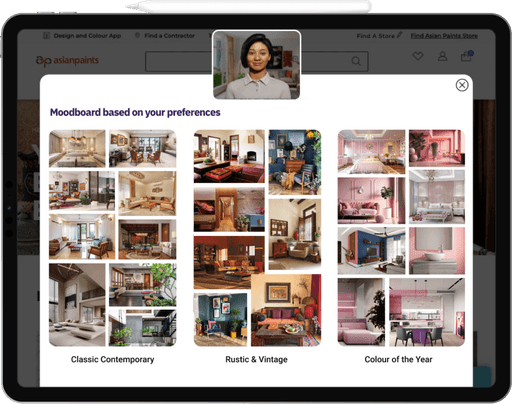Transformed the way users shop for curtains with AI and digital humans
Success
After launching the MVP, we conducted user testing over 2 sprints with 100+ users, as a result,
Time spent on the platform has gone up from 2.2 min to 4.5 mins.
The 73% average user interact with digital human assist
The bounce rate has decreased to 35%.
User Frustration
Urban couples find buying curtains challenging due to busy schedules, limited access to experience centers, and frustrating online navigation with unclear product guidance and complicated support.
Design Thinking Workshop
Design thinking workshop was conducted with the AP's stakeholder, sales manager, sales representatives, and end users.
During the workshop, insights were gathered.
Existing User Journey: Steps Through the End User’s Perspective

Sales Representative
Ramesh Shinde
"Offering custom options such as tailored sizes, fabric choices, and unique designs, customers seeking personalised curtains. However, balancing these are tough challenge."

Sales Manager
Rajiv Gupta
"To drive sales, it's crucial to actively address diverse customer preferences in curtain styles, colors, fabrics, and prices. Failing to meet expectations risks lost sales and negative reviews."
Contextual Inquiries for End Users, Sales Managers, and Sales Representatives
To comprehend diverse user workflows, I gathered insights from end users and the sales team to optimise the solutions for pain points, conducting a series of interviews.
Bridging Insights and Actions; Key Decisions
Ideas and information were systematically organised and grouped using affinity mapping to reveal how users categorised the collected data.
This collaborative approach allowed us to:
By asking the right questions and observing user behavior, we gained a deeper understanding of their pain points and needs.
Witnessing user struggles firsthand fostered a shared understanding and commitment to creating a better experience.
Key decisions factors
Diverse preferences indicated the need for a broad catalog but highlighted the importance of focusing on top-performing trends.
Challenges in balancing customization costs with operational efficiency.
Increasing mobile usage dictated the need for mobile-first design.
Usability insights emphasised the importance of safe and multimodal intuitive design for conversation.
Strong dependency on online-first approaches, requiring synchronization between online catalogs and in-store availability.
By blending qualitative and quantitative methods with design thinking principles, uncovered valuable insights that truly resonate with both users and business needs, this thoughtful approach helped us better understand user pain points and find practical opportunities to stand out and innovate, ensuring our solutions are both impactful and meaningful.













